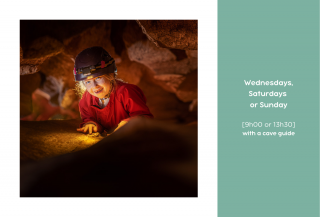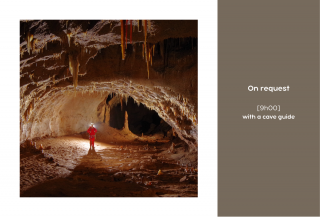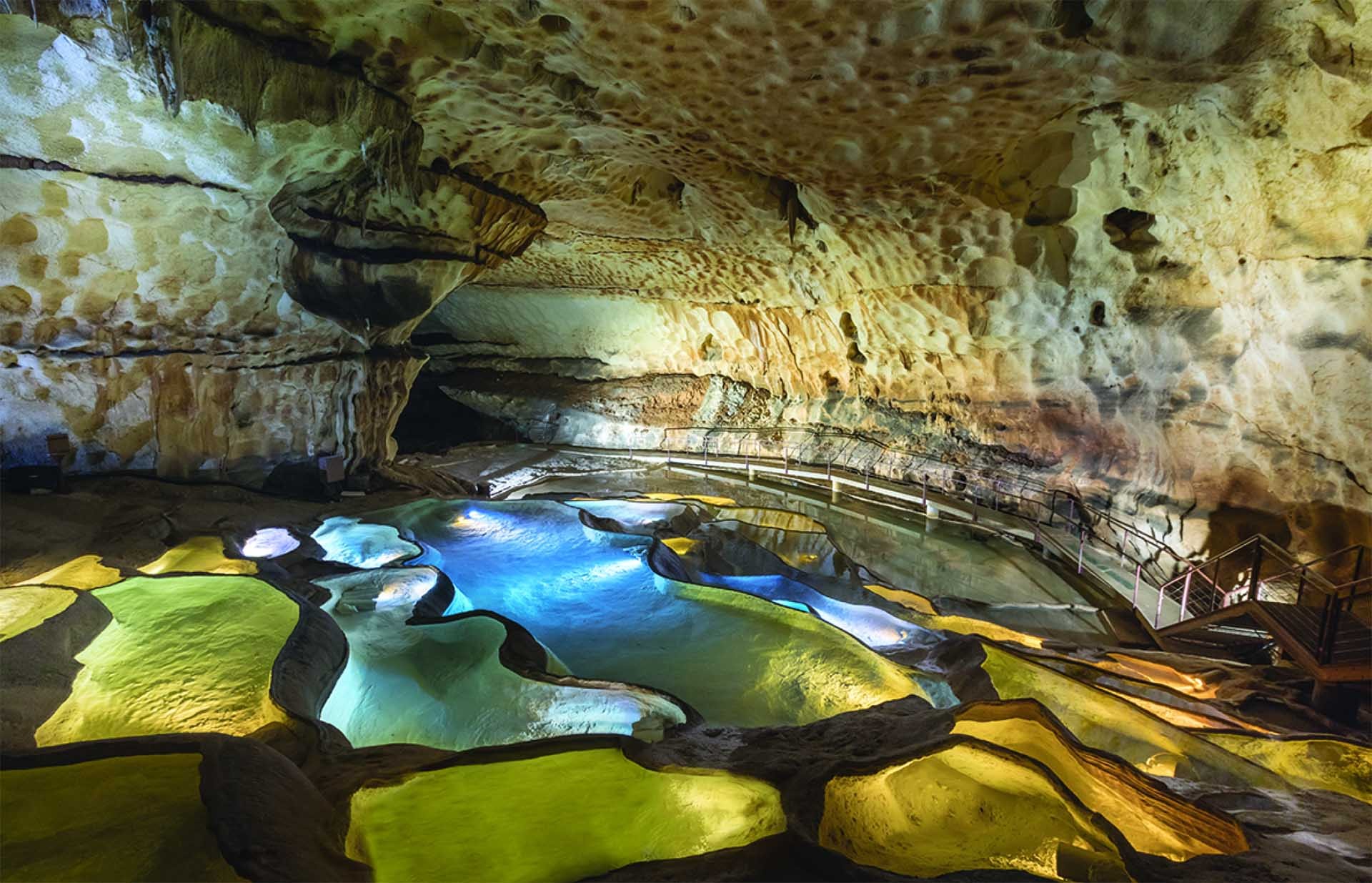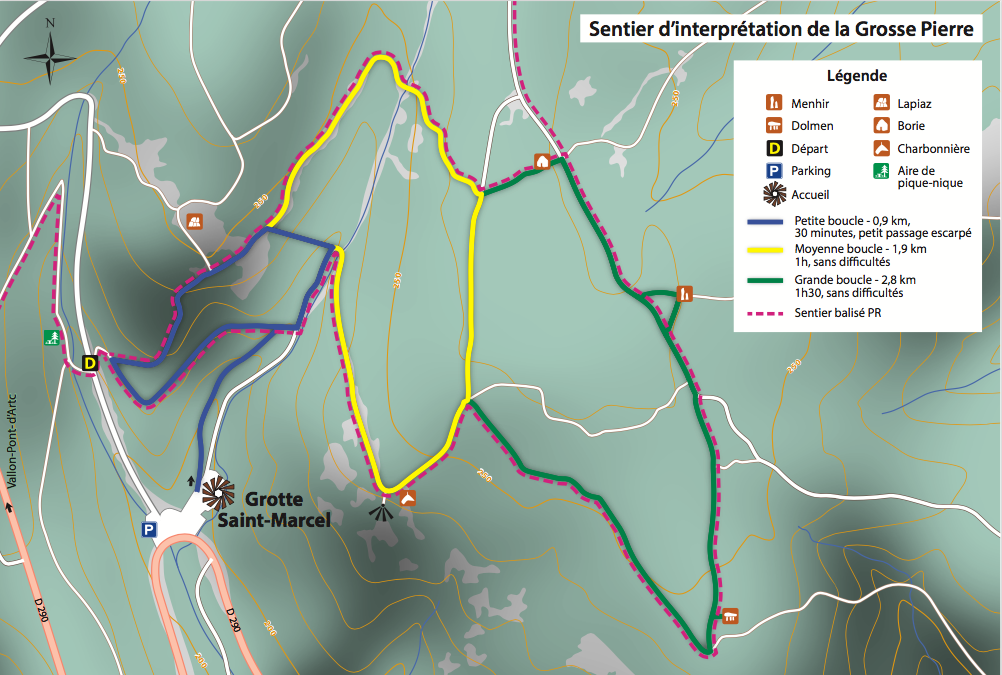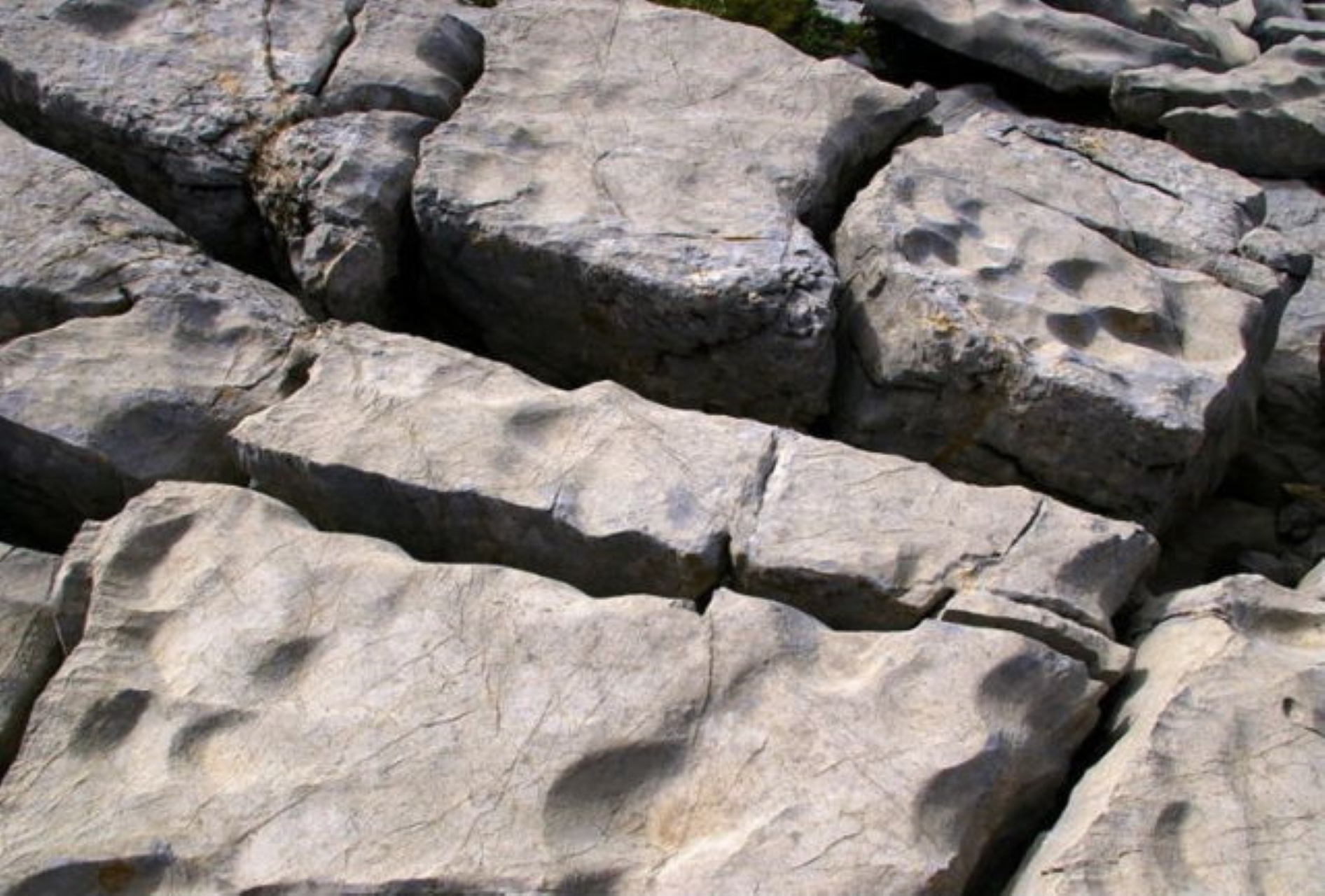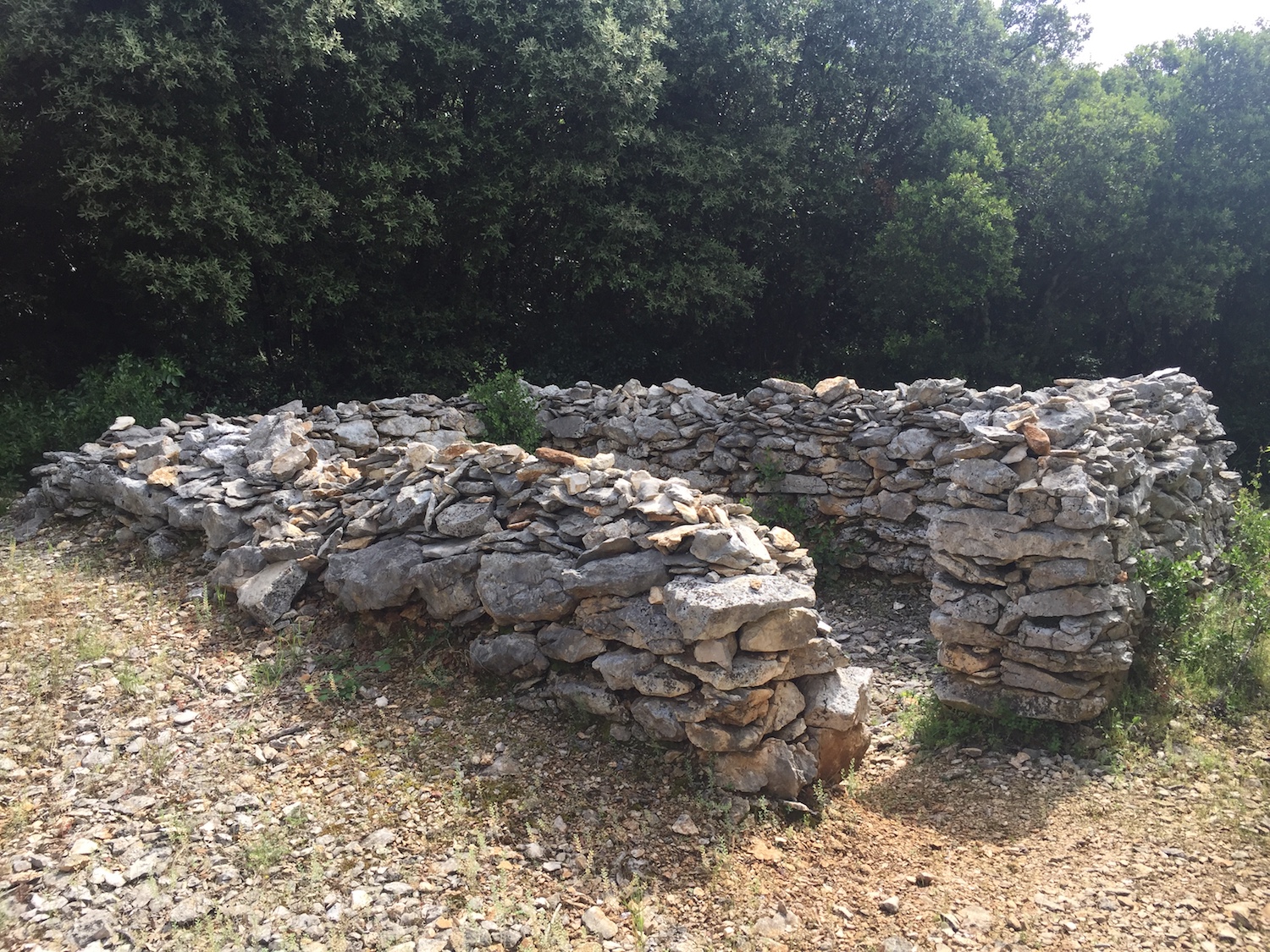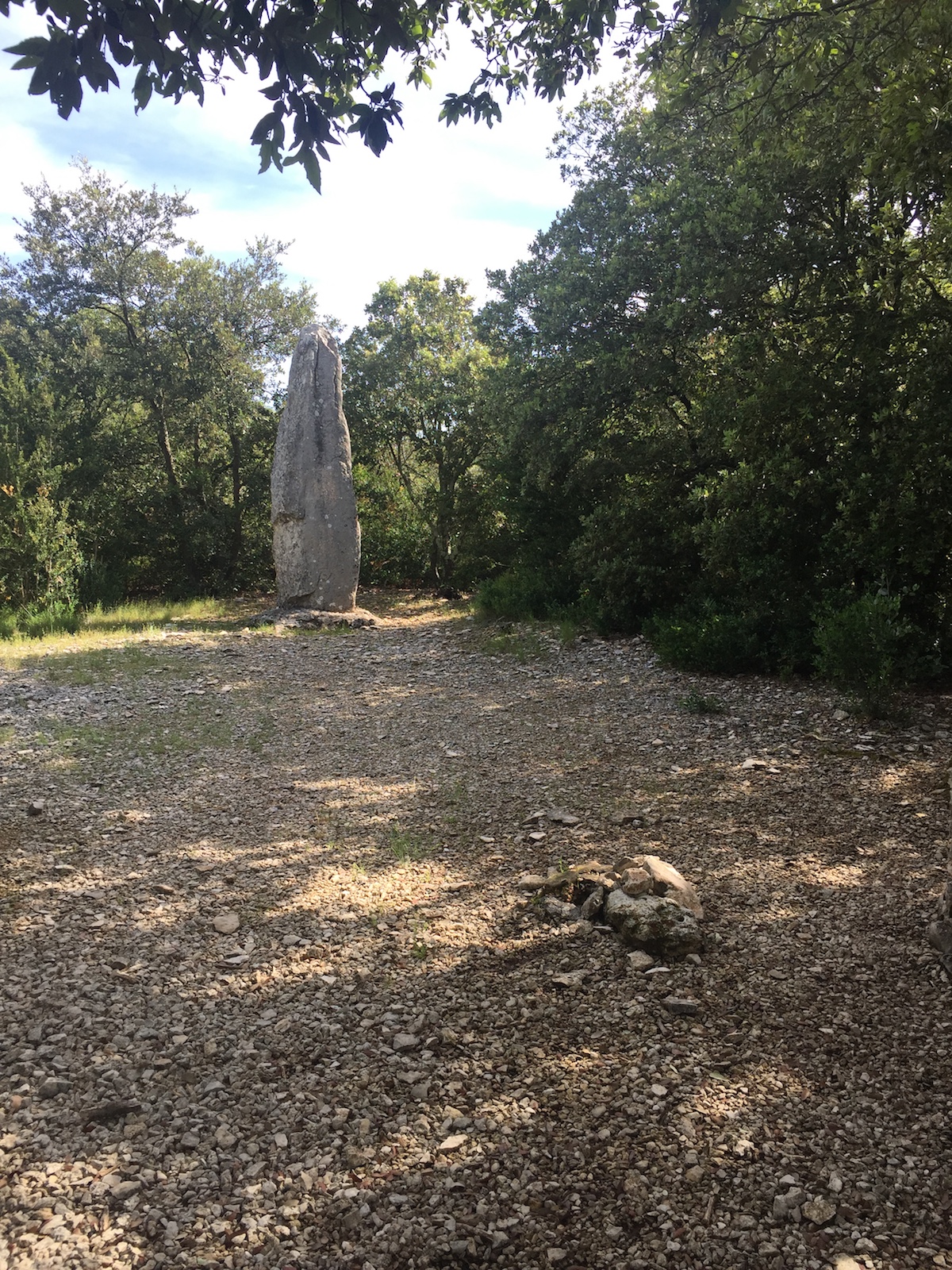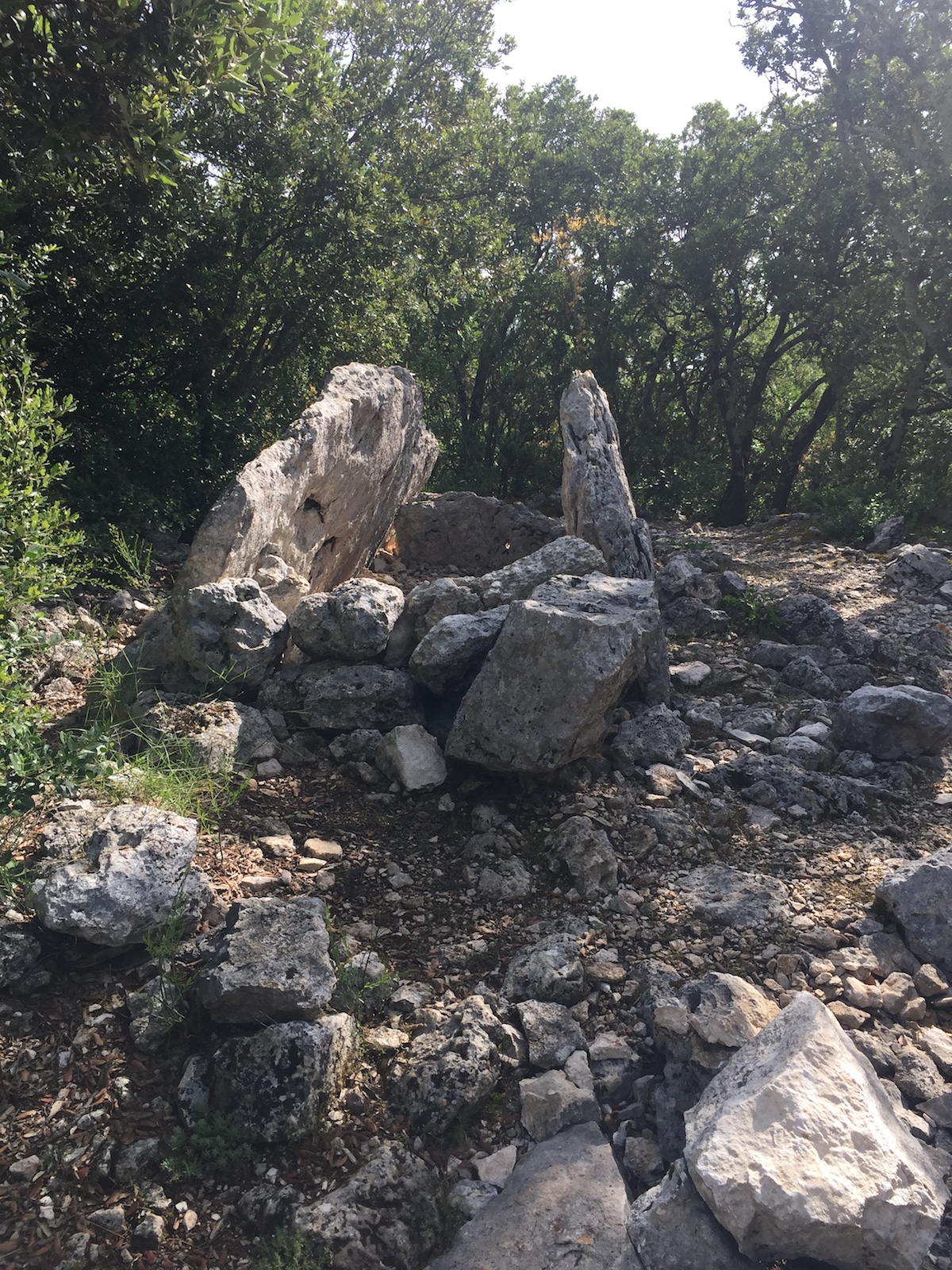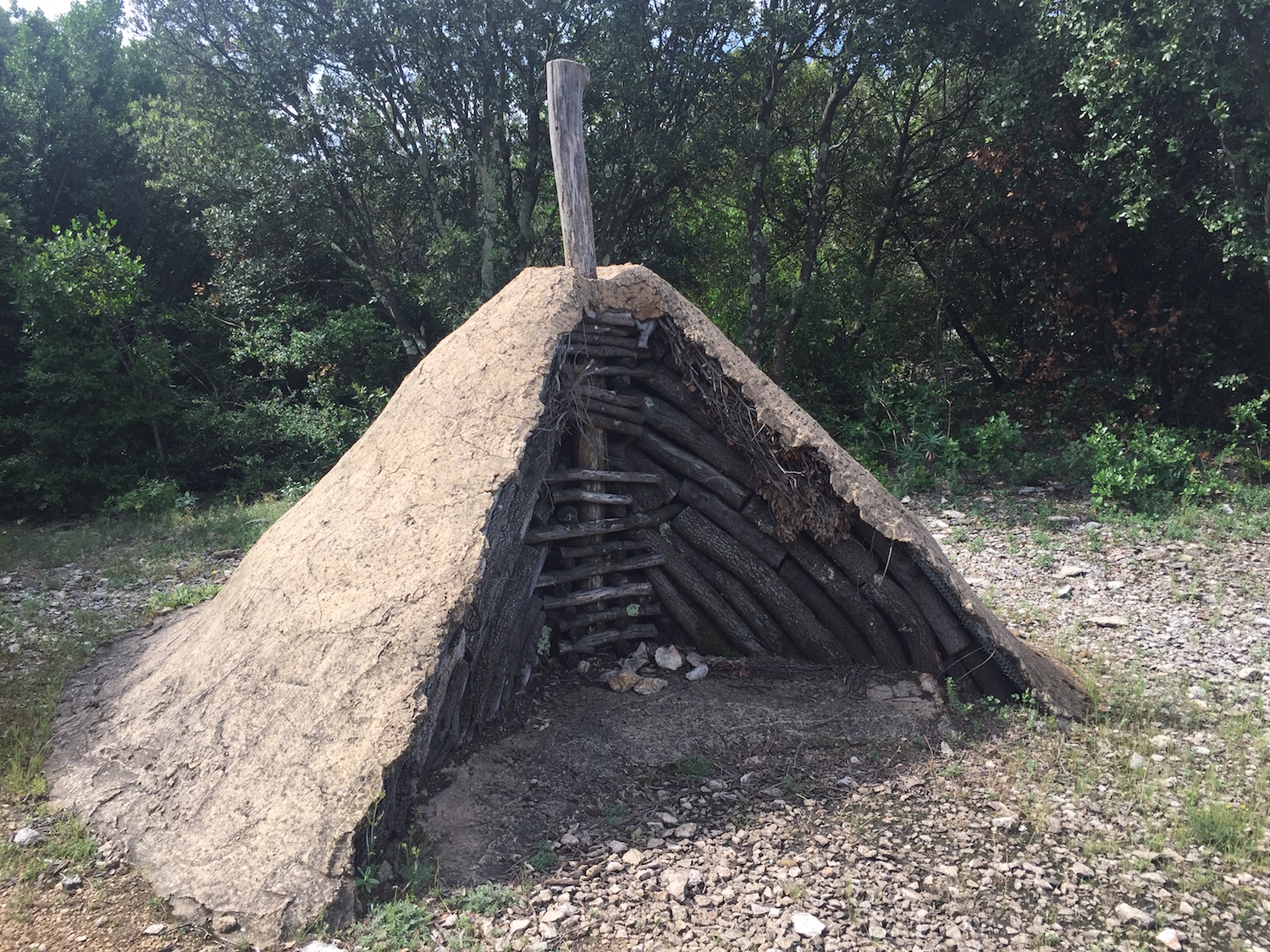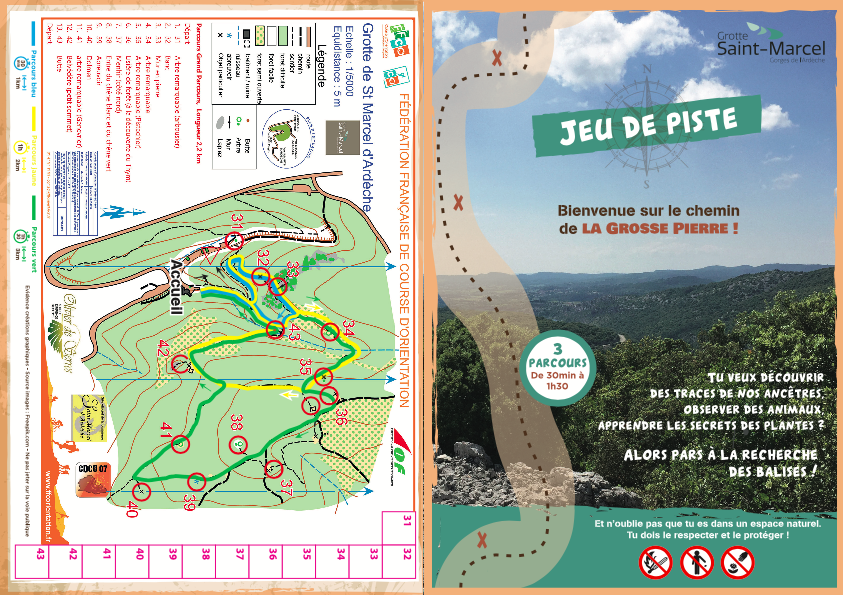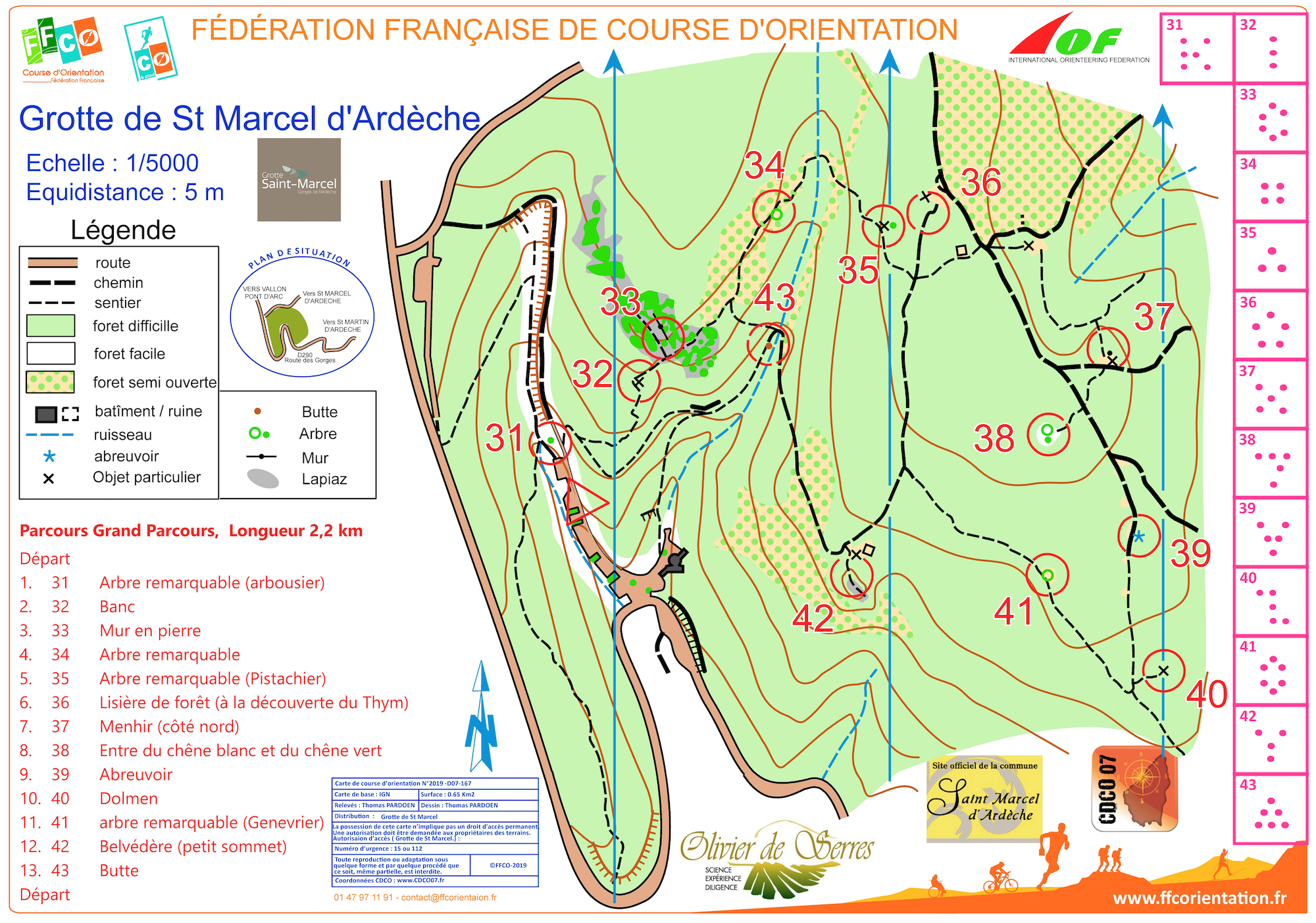The Big Stone Trail
Presentation
From Grotte Saint Marcel, explore the natural surroundings on our 2.8 km nature trail, admire its megalithic remains (a dolmen and a standing stone), see how man has influenced the landscape through the ages (a dry-stone hut or borie, a charcoal kiln) and wonder at the limestone pavement (lapiaz) so characteristic of limestone massifs.
Lapiés or Lapiaz is the name given to a rill-like erosional form of limestone solution. These grooves, created by rainwater trickling slowly over the surface, eventually dissolve the rock, forming grikes (furrows, cracks or even crevices) of varying sizes. Over a period of a few million years, it gives us a surface of sharply etched and pitted rock clints.
Bories. Today you are more likely to see herds of goats in the Ardèche Gorges, but in the 18th and 19th century shepherds brought their sheep to pasture on the area’s grassy plateaux. Traces of this pastoralism still remain in the form of bories, dry-stone huts, which served as a shelter in bad weather or as a tool store.
The Grosse Pierre standing stone is one of the nine menhirs documented in Ardèche. It stands 3.5 meters high and was erected between 2600 and 1800 BC. According to Léopold Chiron, one of Ardèche’s pioneering archeologists, these stones were called “Plourousses”, as they were thought to indicate the place where the weeping women mourners (pleureuses) met during funeral ceremonies. Standing stones no doubt served as temples where gods or the goddess of nature could be worshipped. Water-diviners believe they are erected above telluric network nodes which create a link between earth and sky. Grosse Pierre menhir has been Christianised with a Saint Andrew’s cross engraved on its upper northern face.
The Colombier dolmen has few remains, just two side slabs and part of the end slab. The chamber is 3.5 to 4 meters long and 1 meter wide. It is impossible to see how big the base of the cairn was. This dolmen is one of almost 900 documented in Ardèche. They served as burial chambers, mainly collective ones.
The charcoal kilns. These were used throughout the 19th century and into the early 20th century to produce charcoal. This was then transported by boatmen down the Ardèche river. Traces of charcoal leakage have been noted in several parts of Grotte Saint Marcel.
The nature trail is equipped with 13 checkpoints with pin punches.
Whether you choose to use it as an orienteering course for your class or a mystery trail for the inquisitive, the Big Stone trail is a great way to explore the surroundings.
Whether you choose to use it as an orienteering course for your class or a mystery trail for the inquisitive, the Big Stone trail is a great way to explore the surroundings.

